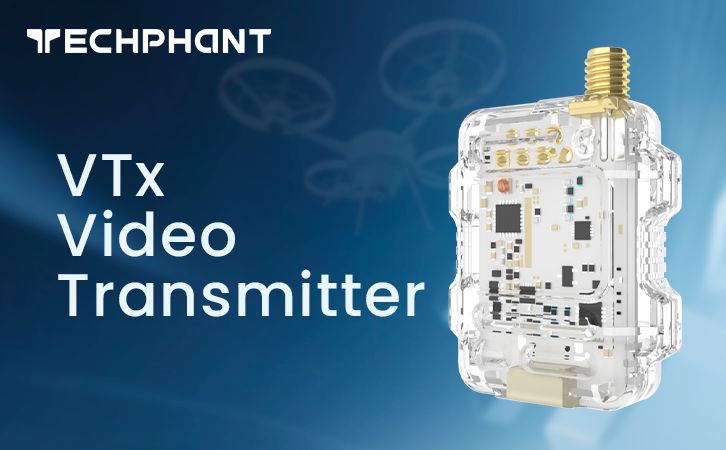The “best” channel for an FPV video transmitter (VTX) depends on your flying scenario, location, equipment quality, and local regulations. Below is a comprehensive analysis based on technical specifications, interference management, legal constraints, and practical applications:
1. Key Factors Influencing Channel Selection

a) Flying Scenario
Solo Flying: Any legal channel is acceptable. Lower-frequency channels (e.g., R1 in Raceband) may offer marginally higher power output .
Group Flying/Racing: Prioritize channels with maximum frequency separation to avoid interference. Examples:
2 Pilots: R1 (5658 MHz) and R8 (5917 MHz) .
4 Pilots: R1 (5658 MHz), R3 (5732 MHz), R6 (5843 MHz), R8 (5917 MHz) .
Indoor/Low-Power Flying: Use 25mW power and channels within regulated bands (e.g., 5725–5866 MHz in Australia) .
b) VTX and Antenna Performance
Signal Cleanliness: High-quality VTXs (e.g., TBS Unify Pro32. Rush Tank) minimize “dirty” signals that bleed into adjacent channels .
Antenna Tuning: Match VTX/VRX antennas to your channel’s frequency (e.g., 5800 MHz antennas work best with R5/F4) .
c) Digital vs. Analog Systems
| System | Channels | Interference Risk | Best Practices |
|---|---|---|---|
| Analog | 40+ | High | Use Raceband (Band R) with 30MHz separation . |
| Digital (DJI, HDZero) | 8 | Low | All 8 channels can coexist; avoid CH8 (default boot channel) . |
2. Legally Compliant Channels by Region
Regulations significantly restrict usable channels and power:
Australia: 5.8GHz limited to 5725–5866 MHz (e.g., R3. R4. B6. A1). Max power: 25mW .
USA/EU: Avoid illegal bands (L, U, O). Stick to A, B, E, F, R bands .
Japan/Russia/Ukraine: 5.8GHz banned; use 2.4GHz instead .
General Rule: Always verify local laws via aviation authorities (e.g., FCC, ACMA) .
3. Optimal Channels for Group Flying
Based on Oscar Liang’s interference-minimization guidelines :
| # Pilots | Recommended Channels (Frequencies) | Notes |
|---|---|---|
| 3 | R1 (5658), R4 (5769), R8 (5917) | 100+ MHz separation |
| 6 | E4 (5645), E2 (5685), F2 (5760), A4 (5805), E6 (5905), E8 (5945) | Avoid if frequencies illegal locally |
| 4 (Restricted Spectrum) | R3 (5732), R4 (5769), B6 (5828), A1 (5865) | For regions like Australia |
⚠️ Critical: Ensure all pilots use ≤200mW (25mW indoors) and high-quality VTXs to prevent channel bleeding .
4. Technical Recommendations
a) Channel Selection Workflow
Check Local Laws: Confirm legal bands/power limits.
Survey Group: Ask other pilots for occupied channels .
Choose Farthest Frequency: Pick the least congested, maximally separated channel.
Verify Antenna Tuning: Use an SWR meter (e.g., LiteVNA) for optimal performance .
b) VTX Configuration Methods
SmartAudio/TBS Crossfire: Adjust channels via Betaflight OSD (most efficient) .
Push Buttons: Use for quick changes (e.g., Force V2 VTX) but avoid manual errors .
Avoid DIP Switches: Impractical for dynamic channel switching .
c) VTX Models by Use Case
| Application | Recommended VTX | Channels | Power | Key Feature |
|---|---|---|---|---|
| Racing | Rush Tank | 40 | 25–800mW | Clean signal, low noise |
| Long Range | Foxeer Reaper V2 | 72 | 25–2500mW | High power stability |
| Budget/Cinematic | SpeedyBee TX800 | 48 | 25–800mW | SmartAudio support |
5. Pitfalls to Avoid
Auto-Scan Errors: Manually set channels; auto-search may select adjacent frequencies .
Overpowering: Excessive power causes interference and violates laws (e.g., >25mW in AU) .
Illegal Bands: VTXs with “72 channels” often include prohibited frequencies (e.g., E7/E8) .
Conclusion
The Raceband (R1. R4. R8) is ideal for group analog flying due to wide frequency separation, while DJI/Avatar CH1–CH7 suit digital systems. Always:
Prioritize legal compliance.
Use high-quality VTXs and tuned antennas.
Allocate channels methodically in group settings.
For dynamic environments, SmartAudio-enabled VTXs (e.g., TBS Unify Pro32) offer the most flexible channel management .


